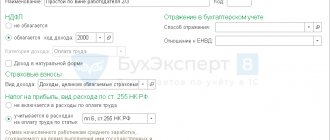The legal regulation of the labor period is carried out at the level of legislative acts, contractual regulation of working conditions and agreement of the parties to the employment. You need to know that in special cases, the working period is the time when the employee does not actually perform labor activity, but is directly dependent on the employer or manager. An example is - simple. Now many people are faced with problems when the work of an organization or its separate structures needs to be stopped.
The reasons may be a lack of materials, a threat to the health and life of employees. Downtime of individual workers, sectors, divisions, departments of government bodies is a real situation today. It’s good if the downtime is short-term.
But what to do when the work of the enterprise is suspended for weeks or even months? How do you need to formalize and organize work during downtime, what guarantees for employees are provided by current legislation? The answers to these questions in an unstable political situation are very relevant.
What is downtime due to independent reasons?
Let's figure out what is meant by downtime. In accordance with Part 3 of Art. 72.2 of the Labor Code of the Russian Federation, downtime is a temporary suspension of work for reasons of an economic, technological, technical or organizational nature.
However, the legislation does not indicate specific reasons for the introduction of downtime and its timing. In this case, the grounds on which downtime is imposed must be documented. Temporary downtime can also occur for reasons beyond the control of the employee and employer.
Downtime can be short-term or long-term. However, it cannot be permanent or declared for an indefinite period.
At the same time, the downtime may be extended.
There are no documents confirming the need for downtime
The HR department must collect a package of necessary documents that will confirm the legality of the introduction of downtime.
Arbitrage practice. The Moscow Regional Court, in its ruling dated November 1, 2011 in case No. 33-24455, emphasized that when making a decision to impose downtime, the employer must keep in mind that there must be commercial, accounting and other documents confirming the need to declare downtime. Otherwise, the court may find it unfounded.
Registration of downtime
The law does not regulate a strict procedure for registering downtime. However, in practice, any downtime is confirmed by a downtime order and noted on the report card.
If reasons arise that prevent the employee from performing his labor functions, in accordance with Part 4 of Art. 157 of the Labor Code of the Russian Federation, the employee must inform his immediate supervisor about this.
The employee may notify the problem orally or in writing. For example, by writing a memo. The employee’s supervisor records the downtime in writing. For example, draws up an act of demurrage.
Next, based on notifications from employees and their management, the employer makes a decision to declare downtime and confirms it with an order.
The circumstances that caused the downtime may depend on:
- employer - then the suspension of work is classified as downtime due to the fault of the employer;
- employee - this is also a “guilty” downtime, but because of the employee’s actions;
- other factors – which the parties to the labor relationship cannot influence. Then they talk about downtime due to independent reasons.
Creation of a commission
In order to draw up a downtime act, you need to quickly create a special commission. It is necessary to include several employees, preferably from different structural divisions. This could be, for example, the deputy director of the enterprise, the head of the facility, the driver, etc. In this case, the employee’s status does not play a special role. The number of commission members is not limited in any way, but in any case there must be at least two people. It is necessary to identify the main person in the commission, i.e. chairman, and ordinary members.
Registration of downtime due to independent reasons
Let's look at the step-by-step procedure for registering downtime due to independent reasons.
When registering downtime for reasons beyond the control of the employee and the employer, the manager approves an act of downtime for reasons beyond their control, a sample of which is attached below:
ACT ON SIMPLE DUE TO INDEPENDENT REASONS
To document forced downtime for reasons beyond our control, an order is issued, the form of which is arbitrary. This order is aimed not only at appointing responsible persons, but also at notifying workers about the introduction of downtime, its termination, and determining the order in which individual workers are sent on downtime.
In addition, such an order usually contains instructions on entering the downtime period into the time sheet and on payment.
The order to end the downtime was not issued (if there is no end date in the order)
If the order declaring downtime indicated a specific end date (for example, “declare downtime from 08/07/2014 to 08/18/2014”), then this order is terminated automatically. If the order declaring downtime was issued with an open date (i.e., at the time of its issuance it was impossible to determine the duration of the downtime), then the employer must issue an order to end the downtime, indicating:
— the date from which work resumes;
- position (profession), full name. employees (employee) or names of structural units (divisions) of the organization that begin work after downtime.
It is mandatory to familiarize the employees of the relevant departments with the order under a personal signature. This will help avoid controversial situations when employees do not show up for work and claim that the employer did not notify them of the end of the downtime.
Order for downtime due to independent reasons: sample
Let's look at the structure of the downtime order.
First you need to specify the basis . That is, the reasons for downtime. You can describe the circumstances that prevent the continuation of work or indicate the point of the administrative document by which the company is recommended (ordered) to suspend work.
Next, you need to indicate the circle of employees who are declared downtime (this can be all or part of the organization’s employees), and the period of downtime (you can specify specific dates for the start and end of downtime or its introduction until further notice).
In addition, it is necessary to indicate the type of downtime - for reasons beyond the control of the employee and the employer, as well as the procedure for paying for downtime (this is discussed in detail below).
In addition to the above, in the order on forced downtime for independent reasons, you can provide other information that the employer deems necessary.
In addition, you can issue another order - to introduce downtime for an extended period. Or make changes to an existing one.
You can read and download a sample order for downtime due to independent reasons:
SAMPLE ORDER FOR DOWNTIME FOR INDEPENDENT REASONS
Features for idle cargo
Cargo downtime occurs, for example, when a transport organization delivers cargo to a customer and is forced to wait until the client unloads it.
The unloading period, measured in hours, must be provided for in the contract of carriage. Often customers provide for a long unloading period, up to a day. To minimize the period of free downtime, you should pay attention to this value at the stage of agreeing on the contract.
The unloading period begins to be calculated from the moment the driver presents the bill of lading to the customer upon arrival at the unloading location.
Downtime notification
According to paragraph 2 of Art. 25 of the Law of the Russian Federation dated 04/19/1991 No. 1032-1 “On employment of the population in the Russian Federation” and paragraph 6 of Rostrud’s letter No. 395-6-1 dated 03/19/2012, the employer must notify the employment center about the introduction of downtime - within 3 -x working days after the decision is made.
Notification of downtime due to independent reasons or downtime due to the fault of the employer is mandatory . If the employer does not notify the employment service, he may face a warning or an administrative fine based on Art. 19.7 Code of Administrative Offenses of the Russian Federation:
- for citizens - in the amount of 100 to 300 rubles ;
- for officials - from 300 to 500 rubles ;
- for legal entities - from 3,000 to 5,000 rubles .
Employees are notified of downtime usually by reading the order (see Article 157 of the Labor Code of the Russian Federation on downtime for reasons beyond their control).
Example of calculating a fine
Perevozka LLC undertakes to deliver goods from point A to point B within 4 calendar days to Vesna LLC. The delivery is classified as intercity transport. Delivery cost is 100,000 rubles. The delay was 60 hours.
The procedure for calculating penalties for vehicle downtime can be formulated in three steps:
- We calculate the amount of the average daily freight charge. To do this, divide the total delivery cost by the delivery time: 100,000 rubles. / 4 days = 25,000 rubles per day.
- We calculate the amount of the penalty. To do this, we multiply the amount of the average daily freight cost by the rate of downtime and the number of hours of delay. The downtime rate is determined depending on the category of transport communication (urban and suburban - 5%, intercity - 1%).
Penalty for transport downtime due to the fault of the customer: 25,000 × 1% × 60 hours = 15,000 rubles.
IMPORTANT!
What about VAT? Charge value added tax on the amount of the penalty. Representatives of the Ministry of Finance clearly stated that VAT should be charged on the amount of fines, since this payment is related to the provision of taxable services. The position of officials is enshrined in the Letter of the Ministry of Finance of Russia dated 04/01/2014 No. 03-08-05/14440.
Let us note that the courts take a different position and believe that there is no need to charge VAT on the penalty (Resolutions of the Arbitration Court of the Volga District dated December 1, 2014 No. F06-17838/2013, FAS Moscow District dated April 25, 2012 No. A40-71490/11-107- 305). But the Federal Tax Service does not accept arguments for consideration, and will have to challenge its position in court.
So, the third point of the algorithm will be the calculation of VAT:
15,000 × 20% = 3,000 rubles.
Conclusion:
Vesna LLC has the right to claim a penalty from Perevozka LLC in the amount of 18,000 rubles for 60 hours of delay.
Payment for downtime
Let's move on to the next step - paying for downtime.
According to Art. 157 of the Labor Code of the Russian Federation “Payment for downtime”, downtime due to the fault of the employee is not paid . Payment for downtime caused by the employer is calculated in the amount of at least 2/3 of the employee’s average salary.
How is forced downtime paid for reasons beyond the control of the employer and employee? Payment is made in the amount of at least 2/3 of the tariff rate, salary (official salary), calculated in proportion to downtime.
An example of calculating downtime due to independent reasons can be found below:
At the same time, according to Part 2 of Art. 157 of the Labor Code of the Russian Federation, in the internal regulations of the employer, payments may be provided in a larger amount.
Based on this, it is clear that payment during forced downtime for independent reasons occurs in the amount of at least 2/3 of the tariff rate (salary). If the downtime was due to the fault of the workers, unfortunately, they should not be paid for it.
We recover losses
If there is downtime at the enterprise due to the fault of third parties, the owners invariably have a desire to somehow compensate for losses and costs of paying employees during the suspension.
They collect them from the guilty party, including the customer, in a voluntary or judicial manner (within civil proceedings). The more complete the evidence base the injured party collects, the greater the likelihood of a positive outcome. It is important to document all the nuances and take a responsible approach to the execution of contracts with customers at the stage of their conclusion. A well-drafted contract with a fixed procedure and compensation for losses in the event of various circumstances will allow you to avoid most further questions and disagreements.
Downtime on the report card
After the order for downtime is issued, a record of downtime is made in the time sheet for recording working hours (forms T-12 or T-13, approved by Resolution of the State Statistics Committee of the Russian Federation No. 1).
The report card must contain the required details, in accordance with Part 2 of Art. 9 of the Federal Law of December 6, 2011 No. 402-FZ “On Accounting”.
RAA Law
"____" min. (time of inspection) Place of inspection ______ (city, street, house number, name of organization). I, the state engineer-inspector of Gostekhnadzor ____________ (name of the inspection, surname, first name, patronymic of the inspector), inspected ___ (name of the object, manufacturer). Brand ________________ Manufacturing plant ________________ Year of manufacture ________________ Main information.
bridge N ________________ Factory N ________________ Color ________________ Engine (model) ________________ Vehicle passport series _____ N _____ Engine N ________________ Certificate.
sign series_____ N _____service life ____ years (source of information; justification of accepted data) operating time ____ motorcycle hours (source of information, justification of accepted data) owned by ________ (postal address of the owner, telephone number; for legal entities - name, legal address, bank details)
Forced downtime of the organization due to coronavirus
Once we have figured out how to process downtime for one reason or another, we will deal with downtime during the unfavorable epidemiological situation in Russia in 2021 due to coronavirus and quarantine.
For a better understanding, here are the explanations of Rostrud, published on the Onlineinspectorate.rf portal in March 2020.
When asked whether it is possible to send workers on downtime on non-working days, officials responded as follows:
“If the inability to work was a consequence of government measures in connection with the spread of coronavirus infection, then downtime can be qualified as beyond the control of the parties. In this case, the order to declare downtime must contain a reference to the specific norm of the regulatory legal act that introduced such measures.”
does not apply to government measures allowing downtime
In theory, the situation when an employer, during the validity of Decrees on non-working days, can issue an order for downtime due to coronavirus, looks like this:
- An organization (or individual entrepreneur) can continue to operate during the period of restrictive measures.
- The performance of work functions by employees became impossible due to government measures to counter the pandemic.
EXAMPLE 1
The company produces medical equipment and supplies using imported materials and components. Due to the closure of the borders of the Russian Federation, new materials and components for production have not been supplied, and stocks in the warehouse have run out. The company may declare downtime.
EXAMPLE 2
The organization owns a hotel. The hotel business is not named in the presidential decrees as one that is allowed to continue operating during the pandemic. The organization must send employees on paid days off.
It is impossible to declare downtime for reasons beyond your control. It is also impossible to pay employees as if they were idle. Since this would be a violation of the provisions on days off with pay and would lead to underpayment to employees of the funds promised to them under the decrees.
An employee who was declared idle was transferred to another job without his consent
Some employers, referring to Part 3 of Art. 72.2 of the Labor Code of the Russian Federation, they practice transferring an employee who has been declared idle to another job without his consent. It should be remembered that such a transfer is allowed only if the downtime is caused by emergency circumstances listed in Part 2 of Art. 72.2 Labor Code of the Russian Federation.
Arbitrage practice. As the Moscow City Court indicated in its appeal ruling dated June 6, 2012 in case No. 11-9038, from an analysis of the norms of Art. 72.2 of the Labor Code of the Russian Federation it follows that the transfer of an employee to another position is allowed if the downtime is caused by a natural or man-made disaster, industrial accident, industrial accident, fire, flood, famine, earthquake, epidemic or epizootic, and in any exceptional cases threatening life or normal living conditions of all or part of the population. Since the court did not establish such circumstances, the employee’s transfer was declared illegal.
Results
Registration and payment of forced downtime for reasons beyond our control during a pandemic can be carried out subject to the requirements of decrees on non-working days.
If, according to the decrees, the employer must send employees on non-working days while maintaining their wages, then this must be formalized as non-working days and paid wages.
If an employer has the right to continue operating during the coronavirus period, but cannot provide employees with everything necessary to perform their job functions, then an order for downtime can be issued.
Read also
23.01.2021
Employer's liability during downtime
The employer bears all responsibility.
During downtime, when the reason was the fault of the employer, an act of downtime is written (the reasons why the activity was stopped are entered) and an order from the manager. When the cessation of work is round-the-clock (weekly), the manager must reflect in the order the need for personnel to be present or absent from the workplace.
Downtime can occur when an employee comes to work, but does not carry out his official activities for the reasons indicated above. Then, when an employee, during downtime, does not appear at the workplace on his own initiative or leaves it on his own, then he cannot count on payment for this time, even if he was notified in advance about the upcoming downtime.








